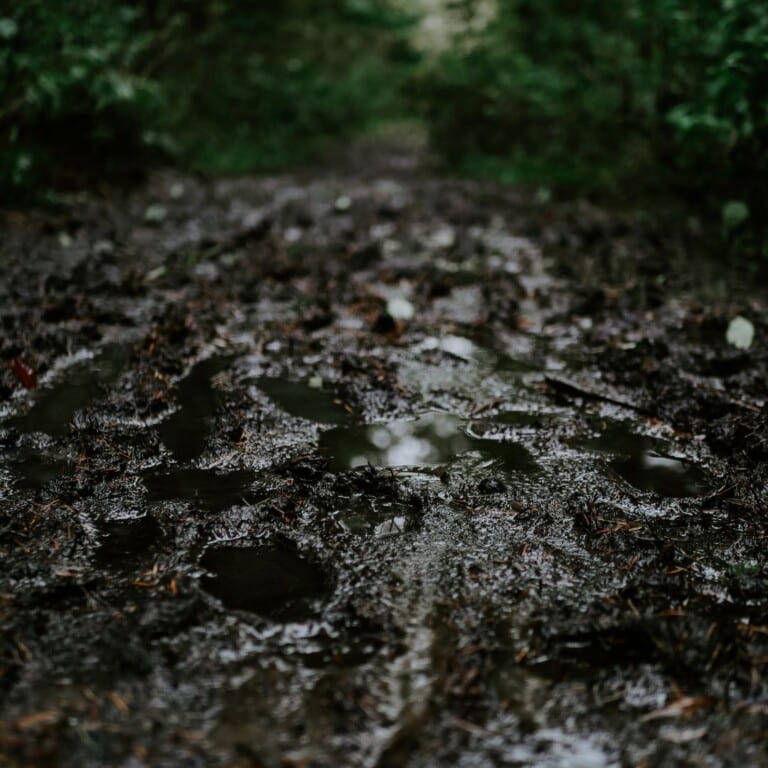Impact of climate change on water levels in Kampinos National Park
In early July, the water level in the Kampinos National Park was truly critical. I watched developments in the southern part of the Park from late April through May and a chunk of June. It was puzzling how the western and southwestern parts of the park, i.e., lying theoretically away from the areas of strongest anthropopression, responded dynamically to changes in rainfall recharge. Due to the fact that precipitation totals were very low, this trend of falling water table was basically unstoppable by any major episodes of intense rainfall. I spoke earlier about the significant spatial variation in precipitation totals within the Park. If, on the other hand, we look at the situation from a multi-year perspective, one gets the impression that nothing so terrible is actually happening. In essence, annual precipitation totals fluctuate just as they did 20 years ago – once it’s close to 800 mm or above 700 mm a year, other times it’s actually closer to 500 or even 400 mm a year.
So what is the problem?
The problem is that there is a shortage of long-lasting precipitation that has a chance to feed those ecosystems that depend on water and end up in groundwater. If we observe a lack of precipitation for a month and the surfaces of the dunes are dried out, then even if a rainfall comes that delivers 100 mm of water layer in one day, this amount of water will run down the dune, creating the impression that this dune sand is concrete. After such a long rain-free period, neither the sand nor any other surface formation in the Park is able to absorb such a volume of water, so even though it hits the biologically active surface, it unproductively runs off. This is detrimental to the area of the entire Kampinos Forest.
Important to these changes that we are currently observing is to note that, theoretically, nowadays the precipitation supply during the year is not drastically different from what was recorded earlier. Instead, its temporal distribution changes, and this is what determines whether a given precipitation is useless for vegetation. Therefore, sometimes the only solution is to introduce such investments that will result in the expansion of hydro infrastructure. This is especially true of the construction of weirs and damming, which would allow water to be retained and prevent it from quickly draining away through ditches or drainage channels. Retaining it so that it has a chance to be retained in the canal bed long enough to penetrate its banks and recharge groundwater seems to be a priority task today.
This is the course of action that is currently being pursued. The park already began such efforts a dozen years ago by launching various research and implementation projects, but it is important to realize that this is a multi-year process, and responding within a year to a critical water resources situation would really be difficult if the park was not properly prepared for it. Fortunately, to some extent it is – although external circumstances do not make it any easier. If climate change begins to reach such extreme figures as those we see, for example, in the Mediterranean, where in places there is no rainfall for 10 months, and for the other two months rainfall equals the previous annual total – then even good site preparation for such changes may not be sufficient for effective adaptation.
Threats to the ecosystems of the Kampinos National Park
Currently, a major threat is the development of buildings around the Kampinos National Park – if we look at Łomianki, Dziekanów, Czosnów, Łosia Wólka and other towns that are developing in the vicinity of the Park from the northeastern side, it does not look optimistic from the point of view of space management. Urban planning can be a problem. In the absence of a Local Development Plan, a zoning decision must be issued for every development, every private house. In such a case, if the thing happens in the buffer zone of the National Park, the Park cannot protest such decisions, since they are issued regarding each investment separately, and not regarding the entire settlement. It would first have to be proven that each individual house poses some kind of threat to the Park’s ecosystem. This is impossible to demonstrate. This is because one house does not pose such a threat.If now such houses are built several hundred or even a thousand in a relatively compact form of development it becomes problematic from the point of view of nature conservation. However, the Park does not have the opportunity to protest such decisions, precisely because they are not made regarding many houses at once. Park authorities therefore have no leverage to effectively address the issue of development pressure in the buffer zone until they can prove their harm to protected ecosystems investment after investment.
It is also known that it is impossible to ditch the flood wall in the Vistula Valley and cause the increasingly rare surges to nevertheless feed the Park’s water resources. What remains, then, is to dam up the water in the watercourses that exist. If artificial watercourses have been dug, which are now accelerating the outflow of water from the Park, not giving access to this water to wetlands and those ecosystems that provide habitat for protected animal species, it may be possible to at least slow down this outflow by building more dams.
The Kampinos Forest is a very sensitive set of water-dependent ecosystems that are subject to protection, but what the end result of this protection will be – at the moment no one can guarantee. We do not know what the future of the area will be in the context of climate change and the unfavorable temporal and spatial distribution of precipitation in the Park. This is the fundamental problem of KPN.

Dr. Maciej Lenartowicz, Faculty of Geography and Regional Studies, UW
The post is part of a series on natural heritage entitled “How to Live? – Naturally!”, which was created to draw attention to the need to protect the Earth’s natural heritage.
#naturalheritage #worldheritage #ExpertsUW #unesco #natural

